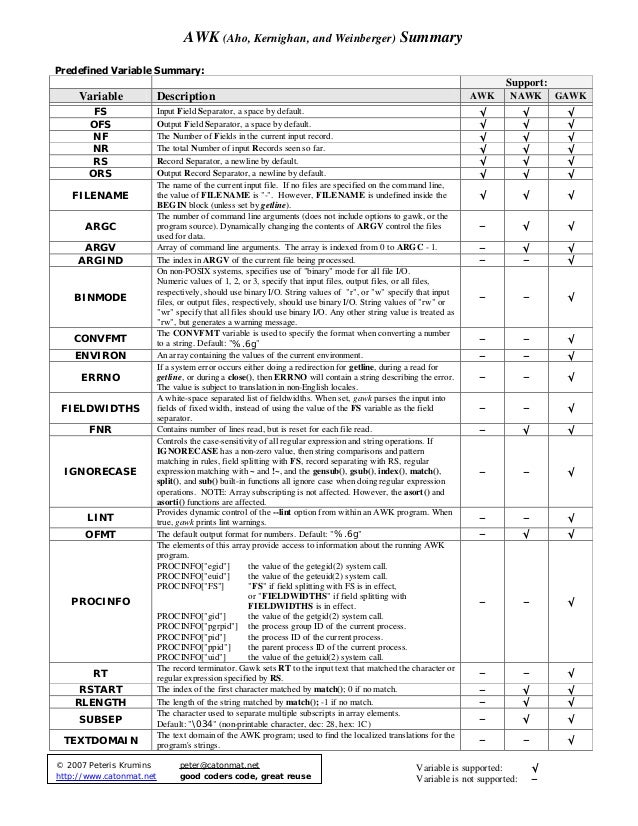

When this code is executed, it produces the following result −Ĭopyright (C) 1989, 1991-2012 Free Software Foundation. This option displays the version information of the AWK program. This option disables all gawk-specific extensions. $ awk -v name=Jerry 'BEGIN' marks.txt > /dev/null The following example describes the usage of the -v option. It allows assignment before the program execution. It explains the differences between grep, sed, and AWK and provides beginner examples for each. This option assigns a value to a variable. This guide introduces you to Grep, sed, and AWK, which are Linux tools used for text processing. Here, we achieve the same result as shown in the above example.ĪWK supports the following standard options which can be provided from the command line. Its usage syntax is as follows: grep OPTION. It is a quick solution for querying the existence of a particular line on a targeted file. Now we can instruct the AWK to read commands from the text file and perform the action. The grep Command in Linux By definition, the grep command matches and prints text based on a regex pattern. We can provide AWK commands in a script file as shown −įirst, create a text file command.awk containing the AWK command as shown below − On executing this code, you get the following result − Let us display the complete content of the file using AWK as follows − Here’s an introduction to some of its coolest features.
#BASH AWK SED GREP TUTORIAL HOW TO#
We can specify an AWK command within single quotes at command line as shown −Ĭonsider a text file marks.txt with the following content − Linux How to Use the awk Command on Linux Dave McKay Feb 24, 2020, 8:00 am EDT 8 min read Fatmawati Achmad Zaenuri/Shutterstock On Linux, awk is a command-line text manipulation dynamo, as well as a powerful scripting language. We can provide AWK commands either directly from the command line or in the form of a text file containing AWK commands. Match($0, /received.AWK is simple to use. Tail -fn0 /var/log/pi-star/MMDVM-.log | \ Super grateful!!! #!/bin/bashĪCCESS_TOKEN="o.WOgpVaaEBjoVLGKS3VzFnsO4xGClTRiF" What I am trying to is run a bash script to monitor the log using the terminal using something like this:īut with only the 6 variables named above. Additionally could anyone point me toward a low level overview of when to use SED, GREP or AWK, they all seem very similar to me? Just a link to a good tutorial would be great.

Some entries are 2-3 lines others might be more than 8 lines.

I am trying to parse read only comm logs from a radio.


 0 kommentar(er)
0 kommentar(er)
